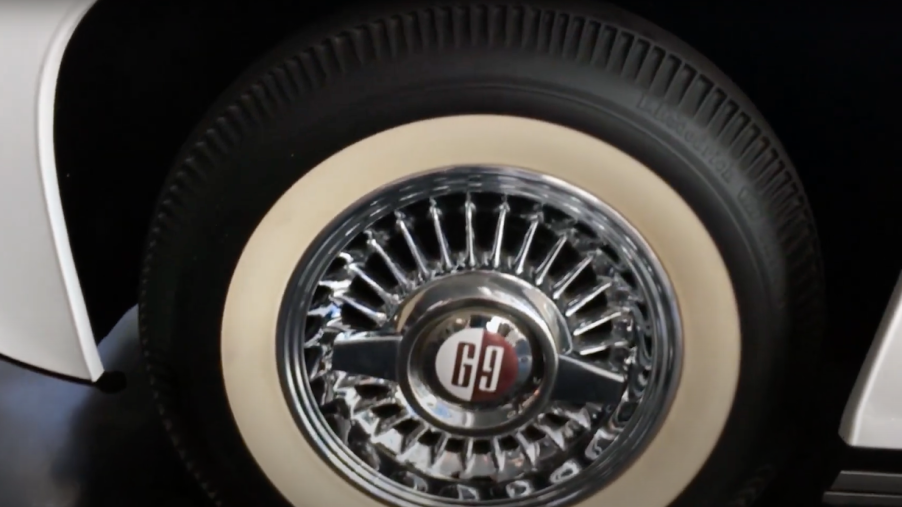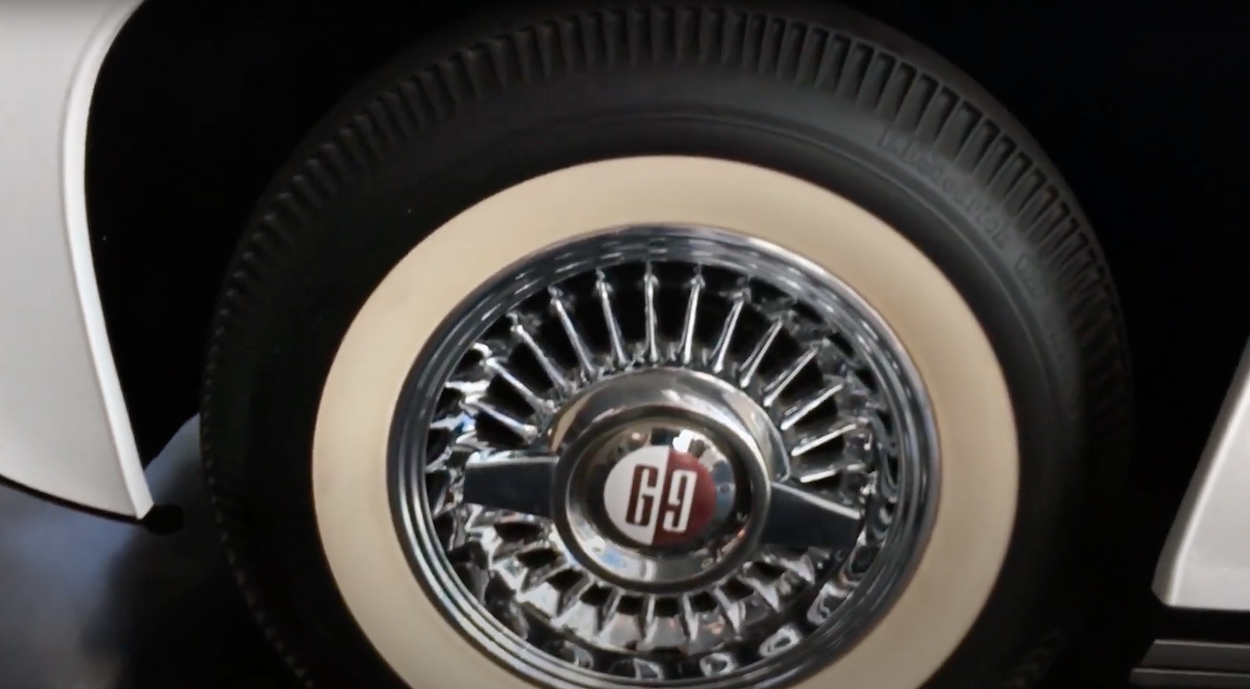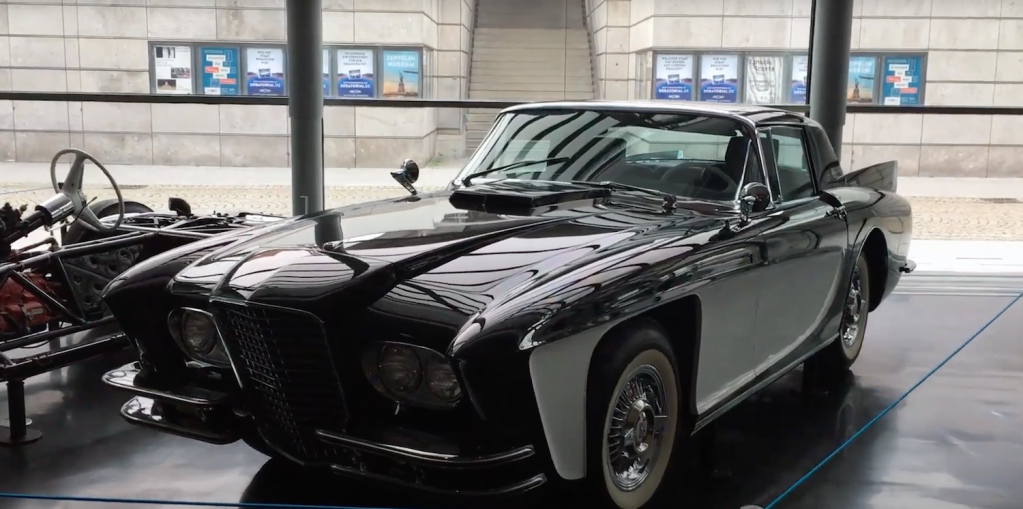
The Gaylord Gladiator Might Have The Strangest Name In Automotive History
The story of the Gaylord Gladiator is one of the most unique in the history of the classic car. It involves Egyptian royalty, the heirs to a U.S. bobby pin empire, the Oscar Mayer Wienermobile, and the Hindenburg. The resulting 1950s prototype was years ahead of its time but never made it into production.
James and Edward Gaylord were early motorheads
The story of the Gaylord Gladiator starts with hair fasteners. Bobby pins to be exact.
James and Edward Gaylord were the heirs to Gaylord Products Incorporated, a family hairpin manufacturing company in Chicago. They spent their youth racing around the city in Deusenbergs, Packards, and Pierce-Arrows. As legend gos, they were pulled over often and well known for politely paying their tickets like gentlemen, then racing off again.
By the end of the 1940s, the brothers decided to translate their manufacturing experience into starting a car company. They dreamed of a world-class automobile. They envisioned a luxurious handbuilt coupe with American horsepower and nimble handling.
The brothers contracted designer Brooks Stevens to pen their car. Stevens is known for the 1949 Hydra-Glide Harley-Davidson, Studebaker GT Hawk, and the Oscar Mayer Wienermobile. The result has been described as a Batmobile wearing a Tuxedo. The brothers decided to name it the Gladiator.
The Gaylord Gladiator was ahead of its time
The Gaylord brothers offered a lot of input on the technical details of their car. In addition, Stevens pulled out all the stops. The result was years ahead of its time.
Stylistically, the Gladiator looked like an eccentric, hardtop version of the Corvette. It retained fins and chrome accents atop the rear trunk, much like contemporary Chryslers. The first prototype featured enormous Lucas headlights. Later models had four large headlights.
All models had squared-off front wheel openings. The prototype’s fenders are like some kind of cycle fender on a prewar car. The later production car fenders were more conservative. With two-tone black and white paint and huge, whitewall tires, the Gladiator looked futuristic in its day and has aged well.
The Gladiator prototypes featured many technological advancements. It rode on a lightweight, tubular chassis. This chassis, in turn, rode on huge rubber bushings. The goal was sporty performance and a luxuriously smooth ride. By all accounts, the Gaylords achieved this.
A Chrysler 331 cubic-inch V8 powered the prototype. Later models featured a Cadillac 365 that made 305 horsepower. Because the Gladiator was so much lighter than other cars of the day, it could reach 60 MPH in eight seconds. The Gaylord brothers promised to dial the engine up to 400 horsepower in some advertising material. If they had been able to do this, they would have had a true supercar on their hands.
The most unique feature of the Gaylord Gladiator was its roof. The car boasted one of the first electric, folding hardtops ever.
How did the Gaylord Gladiator get its unusual name?

When Donut Media compiled a list of the worst names in automotive history, it put the Gaylord Gladiator at the top. It’s true, this singular car has a name you would not want to Google while at work. But how did the Gaylord Gladiator get its name?
James and Edward Gaylord were actually born James and Edward Goldberg. Their father was Sol Goldberg, an industrialist in Chicago. When his company developed a “humped” hairpin design that led to the modern bobby pin, his “Hump Hairpin” business boomed. He and his wife found themselves knocking elbows with the who’s who of the prewar fashion industry. As their wealth grew, they began to fancy themselves as a dynasty. Sol had some political ambitions that culminated in a failed campaign for the mayor of Chicago. Then he died.
Ruth Goldberg not only took over the business but did so in stride. During WW2, she famously convinced the government that bobby pins were critical for morale on the homefront and kept her factory open. She decided to reinvent both the Hump Hairpin company and her own family. First, she reinvented the company as “Gayla” an upscale fashion brand–still making hairpins. Then, she changed her name to Ruth Gaylord and convinced all of her children to change their names as well.
Her sons had equally lofty ambitions for their car company. They took a medieval sword as their sigil. The then integrated the icon into everything from the hood ornament to gauge dials. They likely chose Gladiator because of it worked with this sword and alliterated with Gaylord.
The untimely death of the Gaylord Gladiator

They then contracted Luftschiffbau Zeppelin to produce the vehicle. It might seem absurd to trust the car to the team behind the Hindenburg. And the Zeppelin corporation did mostly make aircraft but had also once co-founded Maybach.
Unfortunately, the Zeppelin team began to change the Gaylords’ design. For this reason, the two production Gladiators look different from the prototype. As the brothers and the company went back and forth, the price of their car rose. They first advertised the Gaylord Gladiator at $10,000 and eventually raised the price to $17,500. That would be $200,000 today. Back then, it cost more than the Rolls-Royce Silver Cloud!
You might think they could not find buyers at this price. But the orders rolled in. One fan was legendary film star Dick Powell. Another customer was Farouk I, former King of Egypt. The business could have stayed solvent with just 25 orders a year. But drama with Zeppelin mounted. Eventually, the brothers sued the manufacturer. Then James Gaylord suffered a nervous breakdown. He and his brother agreed to abandon the automobile company and return to the fashion industry in what you might call a hairpin turn.



